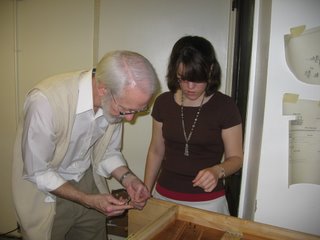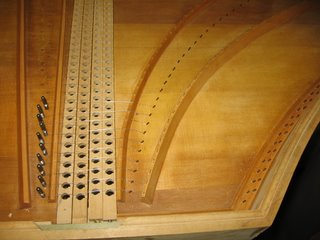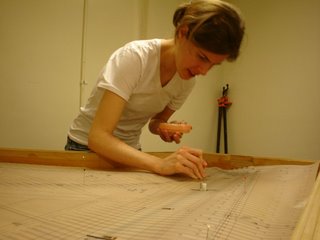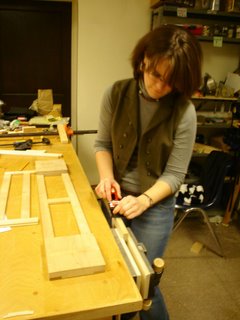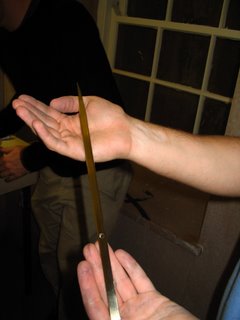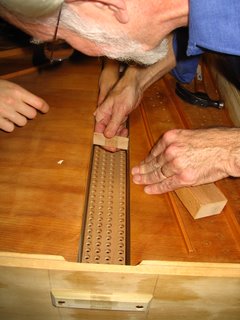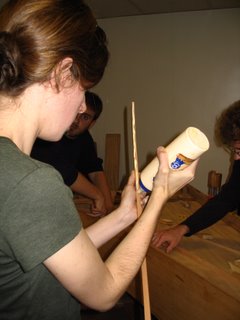Stringing III

Everyone had to make a loop, attach the string to the instrument, and wind a wrestpin before we could go home! As we rotated tasks, we trained each other.

A close-up of Elizabeth winding the steel wire onto the wrestpin. The tension needs to be even so that the wire doesn't slip down the pin, and the wire can't be allowed to overlap on itself.
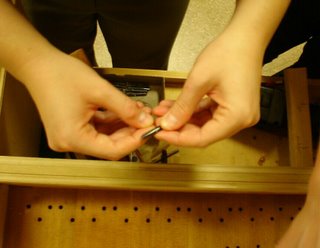
We plucked a bass string to hear the first note on our harpsichord! It was terribly out of tune of course, but it was recognizable.




